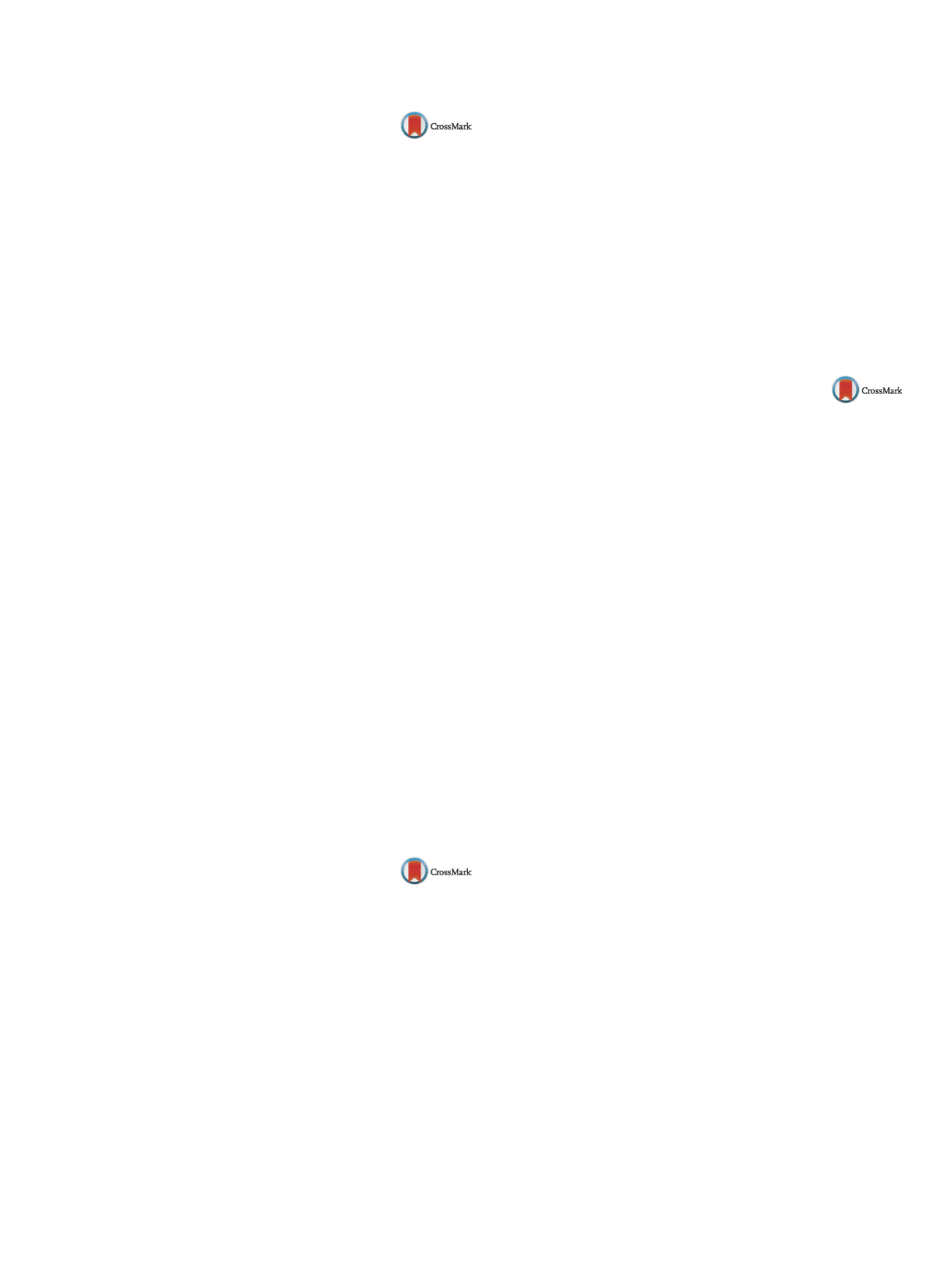

25th European Congress of Psychiatry / European Psychiatry 41S (2017) S521–S582
S535
EV0401A
Comparison between patients with
depressive disorders and healthy
controls in resilience and coping skills
C. Molino
∗
, P. Camera , L. Girardi , E. Gattoni , A. Feggi ,
C.M. Gramaglia , P. Zeppegno
University of Eastern Piedmont ‘A. Avogadro’, Traslational medicine,
Novara, Italy
∗
Corresponding author.
Introduction
Resilience in the psychiatric field, it is defined as the
ability to recover from perceived adverse or changing situations
through a dynamic process of adaptation. This process is influ-
enced by personal characteristics, family and social resources and is
expressed by positive coping skills. It is well known that resilience
has an inverse relation with depression, however, the specific role
of resilience in disorders like depression, personality disorders and
psychosis is not fully understood.
Objectives
Compare differences in resilience and coping skills in
a sample of patients with depressive disorder in acute phase versus
healthy controls.
Methods
We are conducting a cohort study to the date we
recruited 82 inpatients admitted in our psychiatric ward. The
data have been gathered from the 1st December 2014 and they
will continue to be collected until the 1st December 2016, the
healthy controls are represented by 67 subjects with similar socio-
demographic features.
Inclusion criteria are: diagnosis of depressive disorders or dys-
thymia according to DSM-IV-TR diagnostic criteria, age > 18 years,
proper understanding of Italian language, willingness to give writ-
ten informed consent. We compared them with healthy controls
with similar socio-demographic features.
Patients’ assessment includes the following tests:
– Resilience Scale for Adults (RSA);
– Brief-COPE Scale (Brief-COPE);
– Statistical analysis will be performed using SPSS for Windows,
21.0 (Armonk, NY: IBM Corporation).
Results
Data collection is still ongoing.
Conclusions
From a preliminary analysis of data, we assume that
the levels of resilience and coping of our patients is reduced com-
pared with controls, however the recruitment during the acute
phase could significantly influence final results.
Disclosure of interest
The authors have not supplied their decla-
ration of competing interest.
http://dx.doi.org/10.1016/j.eurpsy.2017.01.731EV0402
Efficacy of a hypericum extract
(STW3-VI) – A reanalysis
J. Mueller
∗
, C. Kolb
Steigerwald Arzneimittelwerk GmbH, Medical and Clinical Affairs
Phytomedicine, Darmstadt, Germany
∗
Corresponding author.
Introduction
The course of depression during therapy in studies
is usually monitored by scales like HAMD. Also the course of single
items of the HAMD during therapy might be of specific interest as
some symptoms are of highly predictive value. Furthermore early
improvement during antidepressive therapy is a new aspect which
came into the focus.
Objectives
The objectives of this study were to reanalyze clinical
data regarding early improvement as well as specific symptoms or
symptom cluster – like sleep disturbances.
Aims
The aim of this study was to get deeper insight into the
data structure of 2 RCTs (
n
= 398, 42 days treatment) comparing
the efficacy of a hypericum extract (STW3-VI/900mg once daily)
to Placebo.
Methods
Data structure was evaluated by comparing the total
scores of the HAMD-17 to a single item analysis and by calculating
the factorial structure of the end of treatment data. The treatment
potential was evaluated by calculating a positive predictive value
from day 7 to the end of treatment. ANCOVA, factor analysis and
regression methods were used.
Results
The single item analyses were widely comparable to the
highly significant treatment differences of the total scores as it
were the calculated subscales. The positive predictive value of the
treatment was about 75%.
Conclusions
The results underline the elsewhere proven treat-
ment efficacy of STW3-VI regarding several new subscale aspects.
Disclosure of interest
COI: The authors are employees of Steiger-
wald Arzneimittelwerk GmbH, Darmstadt, Germany.
http://dx.doi.org/10.1016/j.eurpsy.2017.01.732EV0403
Major depressive disorder history
among patients who sought
blepharoplasty operation in a private
ophthalmology hospital in Saudi
Arabia
D. Nagui Rizk
1 ,∗
, M. Abo Ghanima
21
Faculty of Medicine, Alexandria University, Neuropsychiatry,
Alexandria, Egypt
2
Magrabi Eye Hospital, Anasthesia, Jeddah, Saudi Arabia
∗
Corresponding author.
E-mail address:
dalianagui82@hotmail.com(D. Nagui Rizk)
Background
Much attention has focused on body dysmorphic
disorder among patients undergoing plastic surgeries, but there
has been little evaluation of their past history of major depressive
disorder (MDD).
Aim
To estimate the prevalence rate of past history of Major
Depressive Disorder (MDD) in patients undergoing Blepharoplasty
operation in a private ophthalmology hospital in Jeddah, Saudi Ara-
bia.
Methods
All patients who have undergone blepharoplasty oper-
ation during the period from 5 April to 4 October 2016 (6 months)
were included. Previous psychiatric history was taken from the
patients by psychiatric assessment and self-assessment question-
naire, diagnosis of Major Depressive Disorder (MDD) confirmed
previously by consultant psychiatrists in patients’ health records
was included.
Results
One hundred and forty-eight persons undergone ble-
pharoplasty in the hospital from 5 April to 4 October 2016. They
were 89 females (60%) and 59 males (40%). Among those 148
persons, 10 patients were previously diagnosedwithmajor depres-
sive disorder by consultant psychiatrists with a percentage of 6.8%
where 5 were females (5.6% of 89 females) and 5 were males (8.5%
of 59 males).
Conclusions
The number of individualswho present for blepharo-
plasty operation with a history of Major Depressive disorder needs
to take a special consideration. A link between MDD and cosmetic
operation decision should be further studied.
Keywords
Blepharoplasty; Major depressive disorder
Disclosure of interest
The authors have not supplied their decla-
ration of competing interest.
http://dx.doi.org/10.1016/j.eurpsy.2017.01.733

















